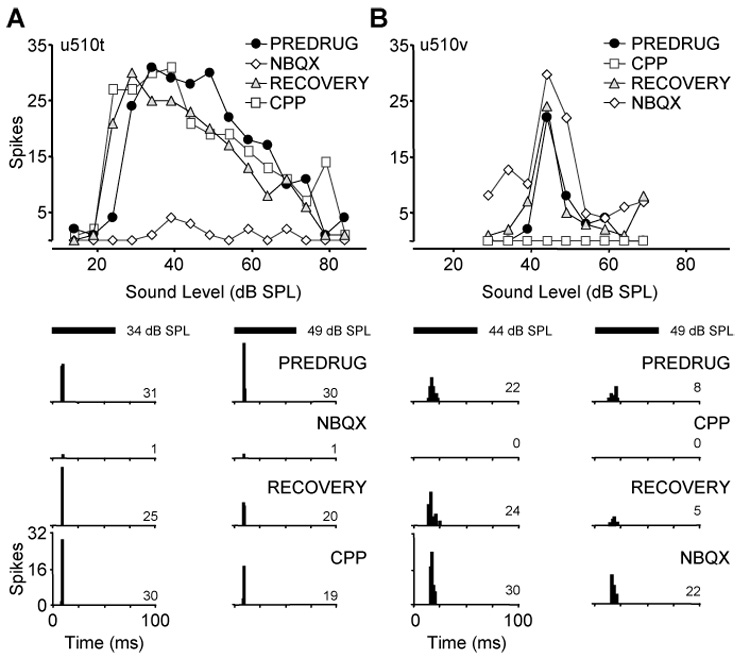Figure 4.

Blockade of AMPARs and NMDARs in onset units has different effects related to first-spike latency. Rate-level functions and PSTHs for two onset units in IC, showing predominant effect of either NBQX (A) or CPP (B) application. A. In this short-latency unit, NBQX nearly eliminated the response at each sound level tested but CPP had little effect. BF: 61.3 kHz; MT: 24 dB SPL; Minimum latency: 6.4 ms. B. In this long-latency unit, CPP eliminated the response at each sound level tested but NBQX caused no spike reduction. BF: 58.2 kHz; MT 39 dB SPL; Minimum latency: 17.8 ms. Drug application times and currents: A. NBQX, 12 min., −40 nA; RECOVERY, 7 min.; CPP, 13 min., −40 nA. B. CPP, 8 min., −40 nA; RECOVERY, 4 min.; NBQX, 24 min. −40 nA. See Figure 2 for protocol.
